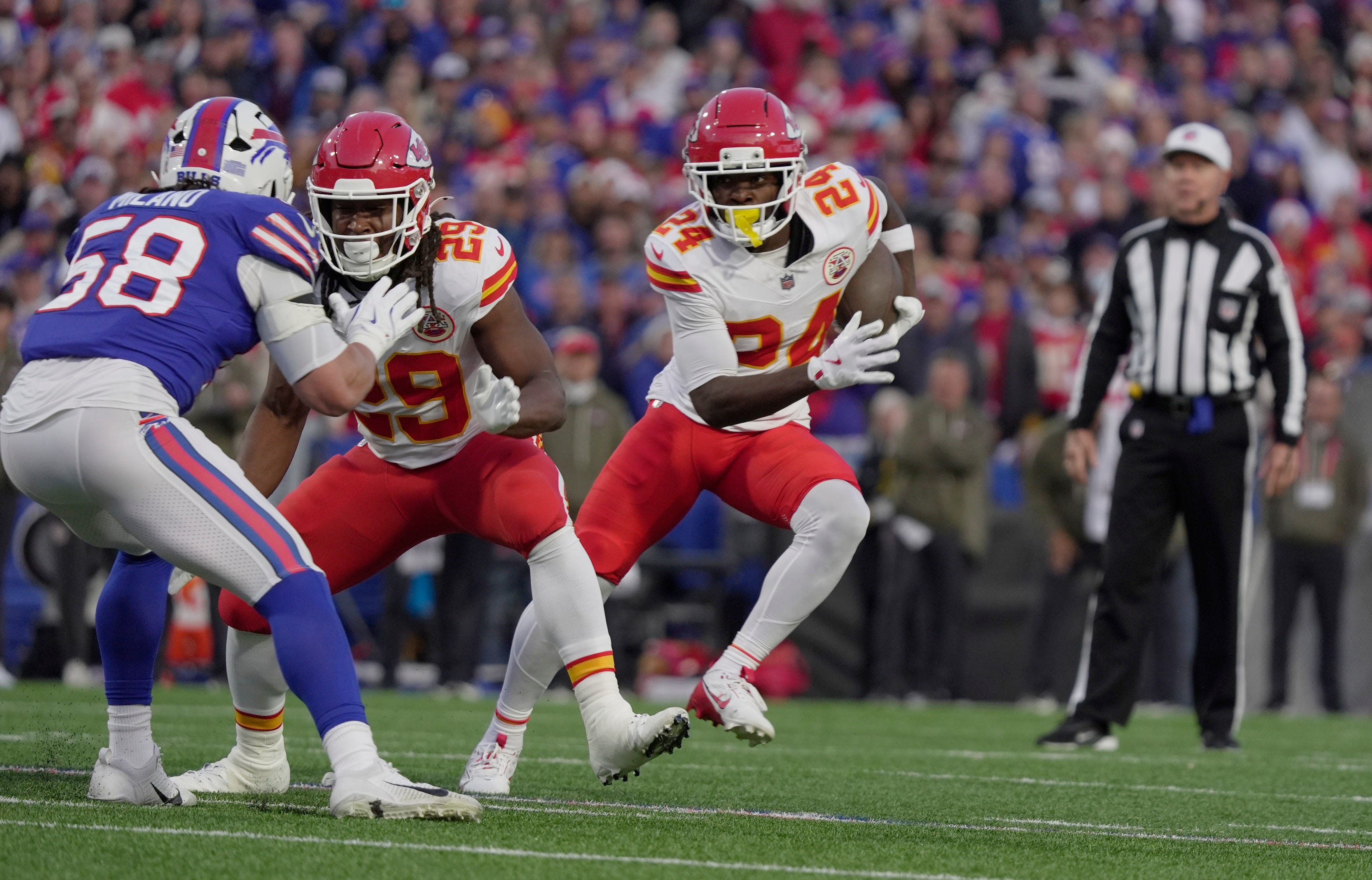The Buffalo Bills’ Defense: From Passive to Aggressive – A Transformation That Challenges Traditional NFL Norms and Provokes Debate on What It Means to Win in Today’s Game
In the landscape of professional football, the evolution of a team’s defensive strategy can often be as significant as the offensive plays that garner the most attention. The Buffalo Bills, under the leadership of head coach Sean McDermott, have undergone a remarkable transformation in their defensive approach, moving from a passive style to a more aggressive, matchup-driven philosophy. This shift has sparked discussions among fans and analysts alike, as it challenges long-held perceptions of what constitutes a successful defense in the NFL.
Historically, the Bills’ defense has been characterized by a conservative approach, often relying on a nickel package that emphasizes zone coverage. This strategy, while effective during the regular season—leading to five consecutive AFC East titles and six playoff appearances—has been criticized for its ineffectiveness in the postseason. The Bills’ defense has struggled against elite quarterbacks, suffering humiliating defeats at the hands of players like DeShaun Watson, Patrick Mahomes, and Joe Burrow. These shortcomings have led to a growing frustration among fans, who have long yearned for a more dynamic and aggressive defensive strategy.
As the Bills prepare for their matchup against the Miami Dolphins, it is evident that a seismic shift has taken place within the organization. In 2025, the Bills have embraced a more diverse defensive deployment, adapting their schemes based on the strengths and weaknesses of their opponents. This adaptability is a stark departure from their previous reliance on a static nickel defense. According to recent statistics, the Bills have utilized nickel personnel on just 62% of their defensive snaps this season, a significant drop from the 81.3% rate observed in the previous year. This change reflects a broader trend of teams adjusting their defensive strategies to better counteract the evolving offensive schemes in the league.
The Bills’ recent performance against the Kansas City Chiefs serves as a prime example of this newfound adaptability. With the Chiefs missing key running back Isiah Pacheco, the Bills recognized that their opponent would lean heavily on the passing game. In response, they opted not to deploy their 4-3 defense at all, instead relying on nickel and dime packages that featured a greater emphasis on defensive backs. This strategic decision paid off, as the Bills were able to pressure quarterback Patrick Mahomes effectively, limiting his completion percentage to a career-low 44.1% and securing a hard-fought victory.
This willingness to adapt on a week-to-week basis is a hallmark of McDermott’s leadership. He has emphasized the importance of being prepared to adjust game plans based on the personnel available and the specific challenges posed by each opponent. Injuries and other factors can often dictate a team’s approach, necessitating flexibility in strategy. McDermott’s proactive involvement in play-calling since a disappointing loss to Atlanta in Week 6 has also contributed to this shift in philosophy, as he has taken a more hands-on approach to the defense’s game plan.
Another key aspect of this transformation has been the increased aggressiveness of the Bills’ pass rush. McDermott has articulated the need for a more ferocious and tenacious attitude on the field. He has rejected the notion that a finesse defense can be successful in the NFL, advocating instead for a tougher, more relentless approach. This change in mindset has been embraced by the players, who have responded with improved performances on the field. The Bills’ defense has recorded impressive sack totals and pressure rates in recent games, demonstrating their ability to disrupt opposing quarterbacks and create chaos in the backfield.
As the Bills gear up to face the Dolphins, their defensive coaching staff will undoubtedly be studying recent film closely. The Dolphins’ offense, led by quarterback Tua Tagovailoa, presents its own set of challenges, particularly with their explosive receiving corps. However, the Bills’ recent performances have instilled a sense of confidence within the team. They have demonstrated a capacity to adapt to different offensive schemes, whether facing a strong rushing attack or a high-powered passing game. The ability to switch between defensive packages based on the opponent’s strengths is a testament to the coaching staff’s preparation and the players’ adaptability.
The Bills’ defensive evolution raises broader questions about the nature of success in the NFL. As teams increasingly rely on high-octane offenses, the need for defenses to adapt and evolve has never been more critical. The Bills’ willingness to embrace change and prioritize aggression over passivity may serve as a blueprint for other teams seeking to improve their defensive performance. In a league where the margin for victory is often razor-thin, the ability to adjust and innovate could very well determine the outcome of games and, ultimately, the fate of franchises.
This ongoing transformation within the Buffalo Bills’ defense is not just a tactical shift; it represents a philosophical change that challenges traditional notions of defensive success in the NFL. As the team continues to adapt and refine its approach, the implications of this evolution will be felt not only within the Bills’ organization but throughout the league as teams grapple with the need for a more dynamic and aggressive style of play in an increasingly competitive landscape.
ORCHARD PARK – If there is one trait that has been prevalent through the years with Sean McDermott’s Buffalo Bills defense, at least from a fans’ perspective, it’s that it was too passive.
The Bills would sit back in their beloved nickel, play zone coverage almost exclusively against the pass, bend and bend and bend, but do so expecting that at some point they’d make a drive-stopping play by either creating a turnover or standing up in the red zone and forcing a field goal.
That was the recipe, certainly when Leslie Frazier was calling the signals, and it continued when Bobby Babich took over as the defensive coordinator. And hey, there’s no denying it has worked pretty well in the regular season as the Bills have won five straight AFC East division titles and made the playoffs six seasons running.
However, we all know what has happened in the postseason – it has been the defense that has failed miserably, torched once by DeShaun Watson of the Texans, four times by Patrick Mahomes and the Chiefs, and once by Cincinnati’s Joe Burrow, ending each of the six postseasons shy of an AFC championship.
But in 2025, there has been a sea change taking place at One Bills Drive, one that will continue Sunday afternoon when the Bills take on AFC East rival Miami at Hard Rock Stadium.
Buffalo Bills defense adapts to matchups

They have been much more diverse in their defensive deployments, matching up to what formations they’re getting from the opposing offense. When teams have run game personnel on the field, the Bills have often gone to a 4-3, taking nickel back Taron Johnson off the field and replacing him with a linebacker. And when it looks like a pass is coming, they either stick to their nickel or even go to a dime package (six defensive backs).
“It’s really trying to win one game at a time, it really is,” McDermott said. “Sometimes plans stay the same, sometimes plans change. That’s what makes this league so difficult is people change week to week and the challenge changes week to week. And sometimes your personnel through injuries and everything and what you have available to you, you may want to do something but you don’t have certain players healthy enough to do it. So you have to find another way.”
Buffalo Bills use of nickel personnel declines in 2025
According to NextGenStats, the Bills’ defense has used nickel personnel on 62% of their snaps this season, by far the lowest rate under McDermott. Last year they played nickel 81.3% of the time. They’ve been in 4-3 for 20% of the snaps after using it barely 1% of the time in 2024, and then they’ve been in dime 18% of the time. That’s a seismic shift in philosophy.
But then last Sunday against the Chiefs provided a case study for the Bills’ willingness to adapt their game plan. They knew that without running back Isiah Pacheco, the Chiefs’ running game was compromised and they’d be relying on Mahomes and the pass game. Thus, the Bills – even with Johnson injured and inactive and Cam Lewis taking his place – did not play a single snap in 4-3.
NextGenStats had them in nickel for 31 snaps and in dime for 26, and of those 26, the Chiefs threw the ball 25 times so it was great recognition by McDermott and his coaches, who without question out-schemed Andy Reid. Mahomes completed a career-low 44.1% of his passes and produced only two touchdowns and the Bills won 28-21.
The week before, facing a strong Carolina rushing attack, the Bills were primarily in 4-3 during the first half, and only when the game got lopsided did they play mostly nickel and dime in the second half.
These changes coincide with McDermott taking a more active role in play-calling since the head-scratching loss to Atlanta in Week 6, and along with the diversity, we’ve also seen an increase in the Bills’ aggressiveness and attack mentality in the pass rush.
“I think attitude on the field,” McDermott said when he was asked what the difference has been on defense. “Not that it was bad. It’s just at another level right now. You’ve got to be nasty if you want to play good defense. If you’re not tough as a defense, what do you got, right? You want to play finesse defense? That doesn’t work.”
That’s quite a statement from McDermott because “finesse” is exactly the word we have long used for his defense. “I’m really proud of the staff, defensively, led by Bobby, and then the way that the guys have embraced that attitude and that nastiness,” McDermott said.
As the Bills get ready to face the Dolphins Sunday in South Florida, Miami’s offensive coaching staff can’t be too comfortable watching the tape of the Bills’ last two pass-rushing performances.
At Carolina, the Bills’ attacked at will against backup quarterback Andy Dalton, sacking him seven times for 45 yards in losses while also generating 22 pressures according to Pro Football Focus. And then against Kansas City, it was shocking to see Mahomes under the kind of heat the Bills generated as they recorded a 52.6% pressure rate.
“Yeah, confident in those guys,” McDermott said. “Every week you have to find a way to win, so we have to manufacture it different ways. We have to keep trying to figure this thing out to where we can piece it together week to week and find different ways to win.”
Sal Maiorana has covered the Buffalo Bills for more than four decades including 36 years as the full-time beat writer/columnist for the D&C. He has written numerous books about the history of the team, and he is also co-host of the BLEAV in Bills podcast/YouTube show. He can be reached at maiorana@gannett.com, and you can follow him on X @salmaiorana and on Bluesky @salmaiorana.bsky.social.
This article originally appeared on Rochester Democrat and Chronicle: Buffalo Bills defense evolves with matchup-driven changes

